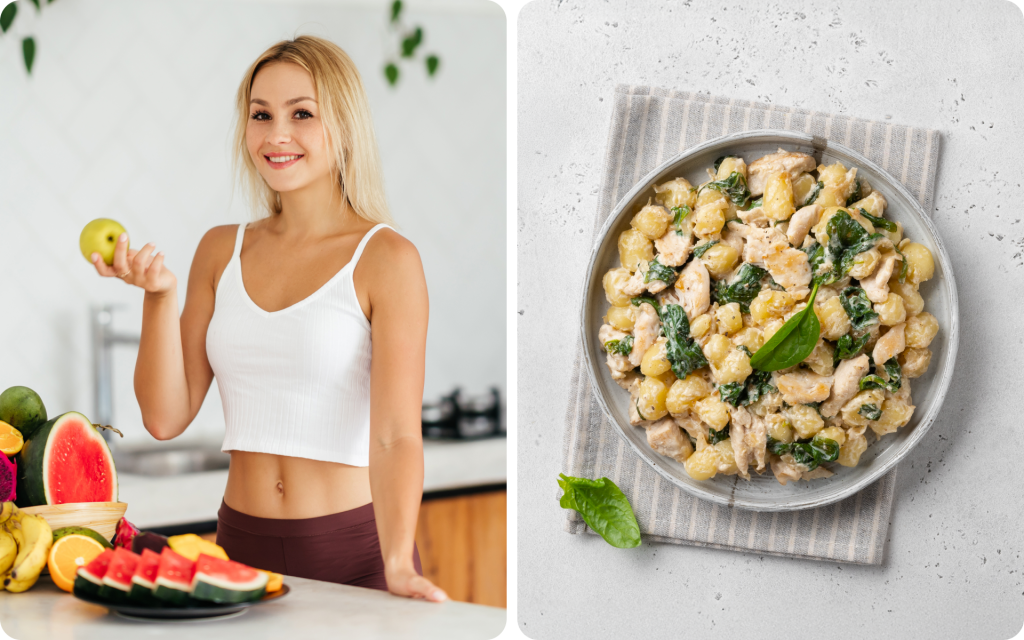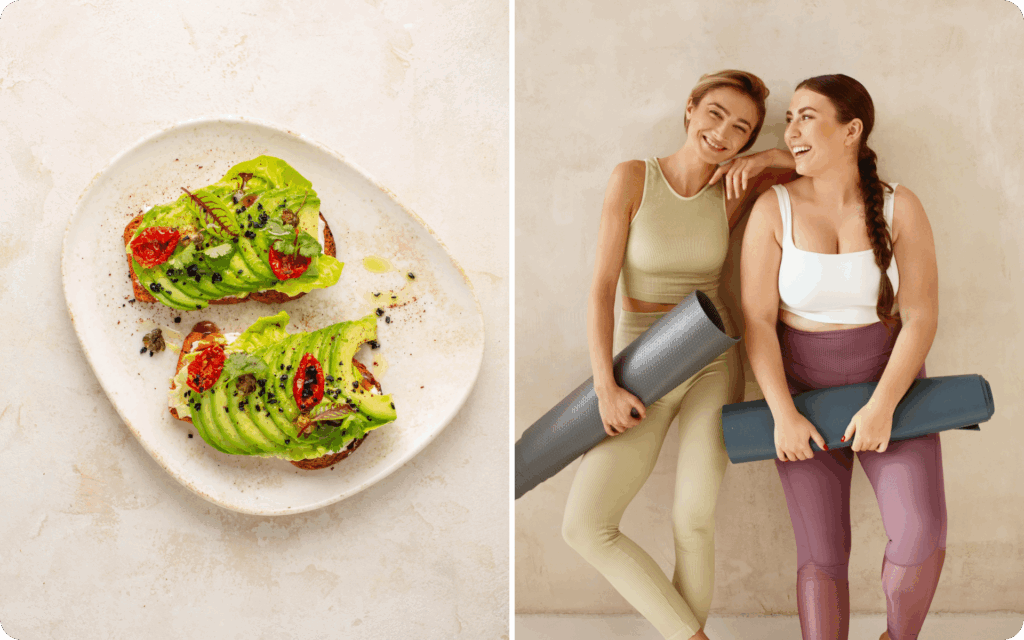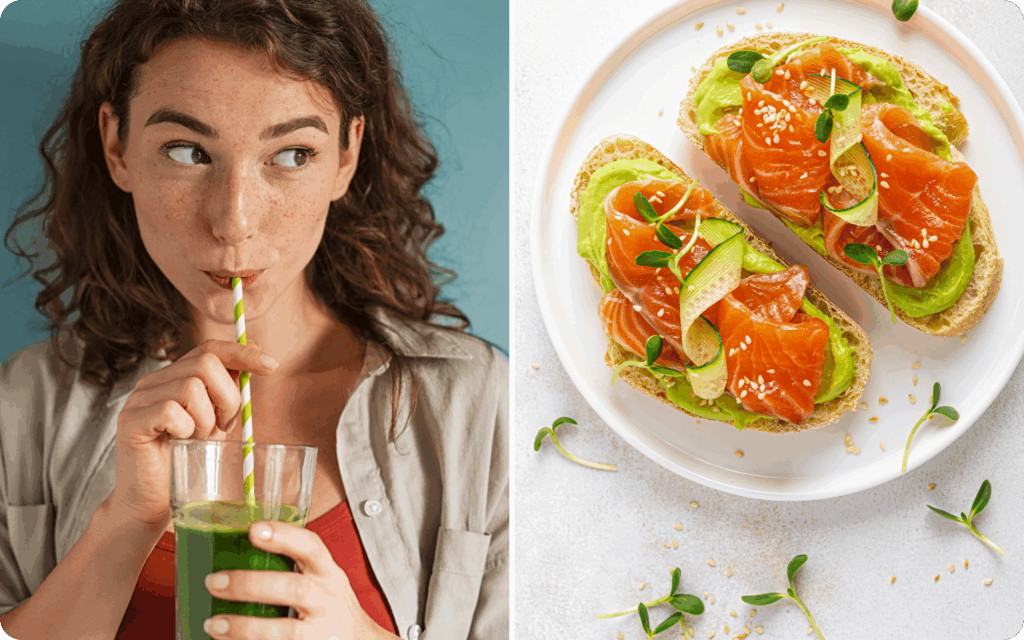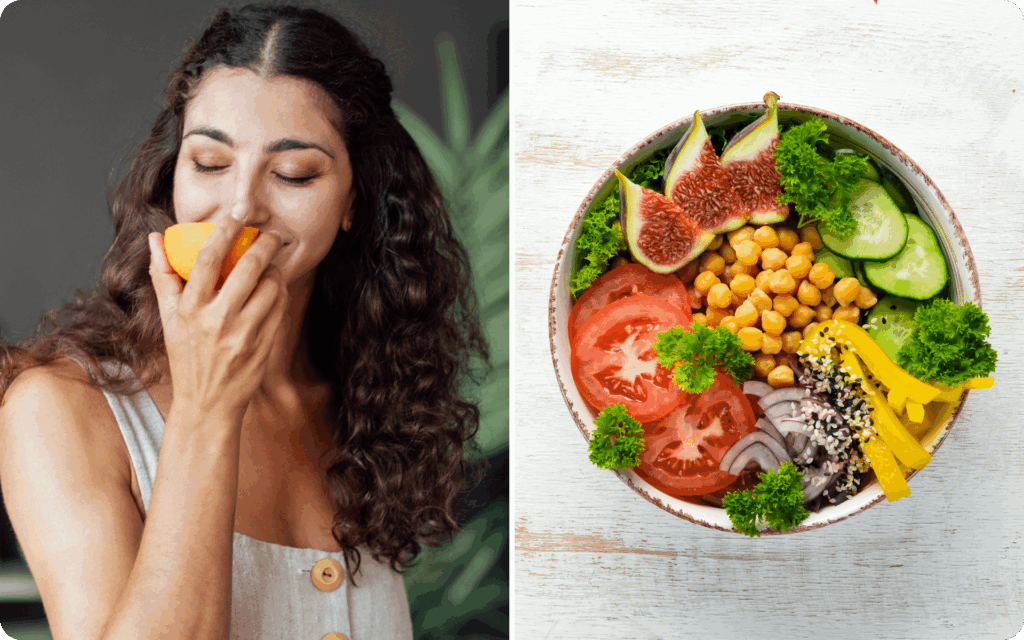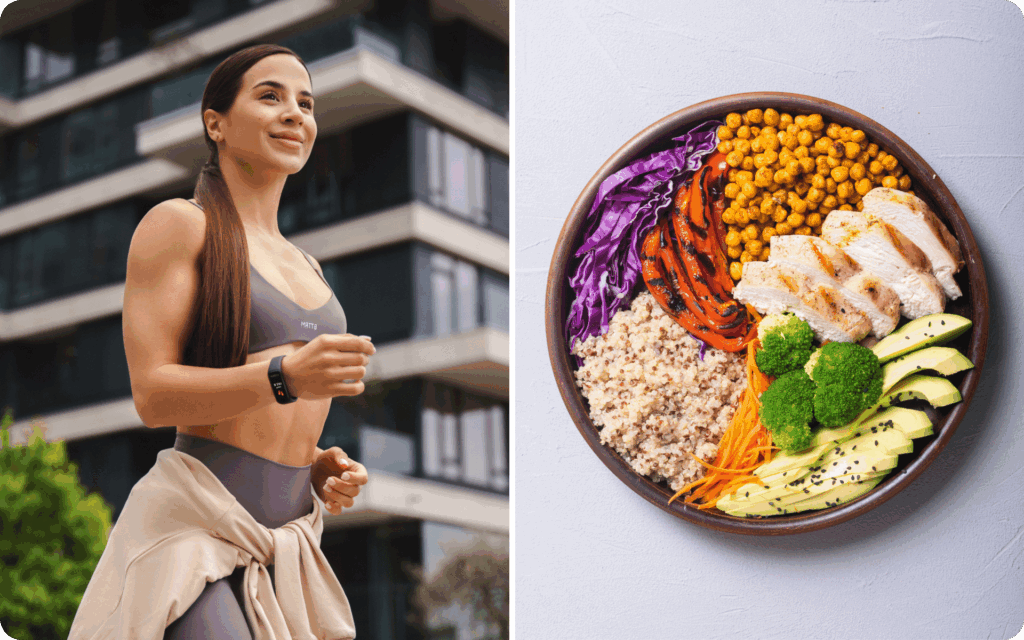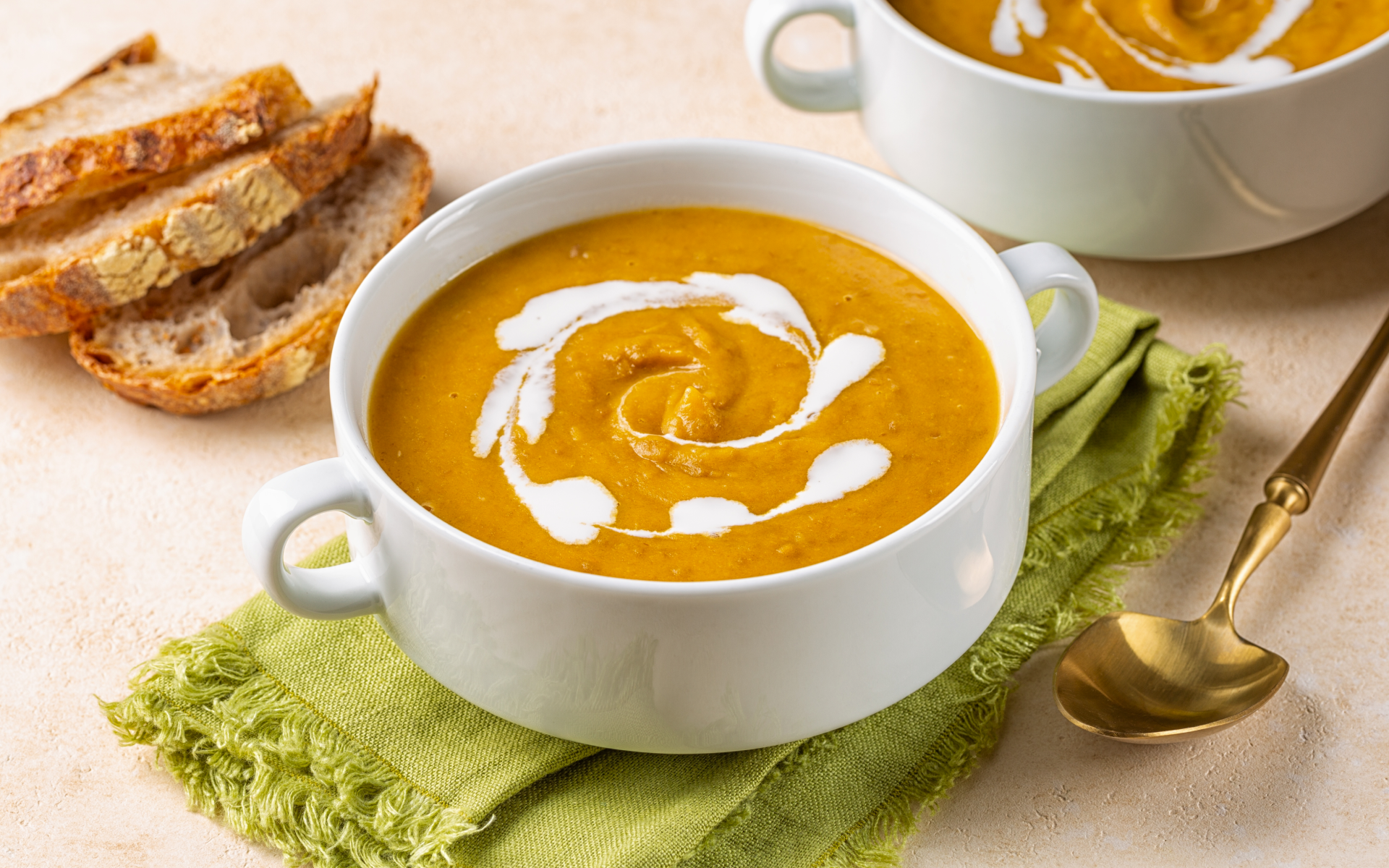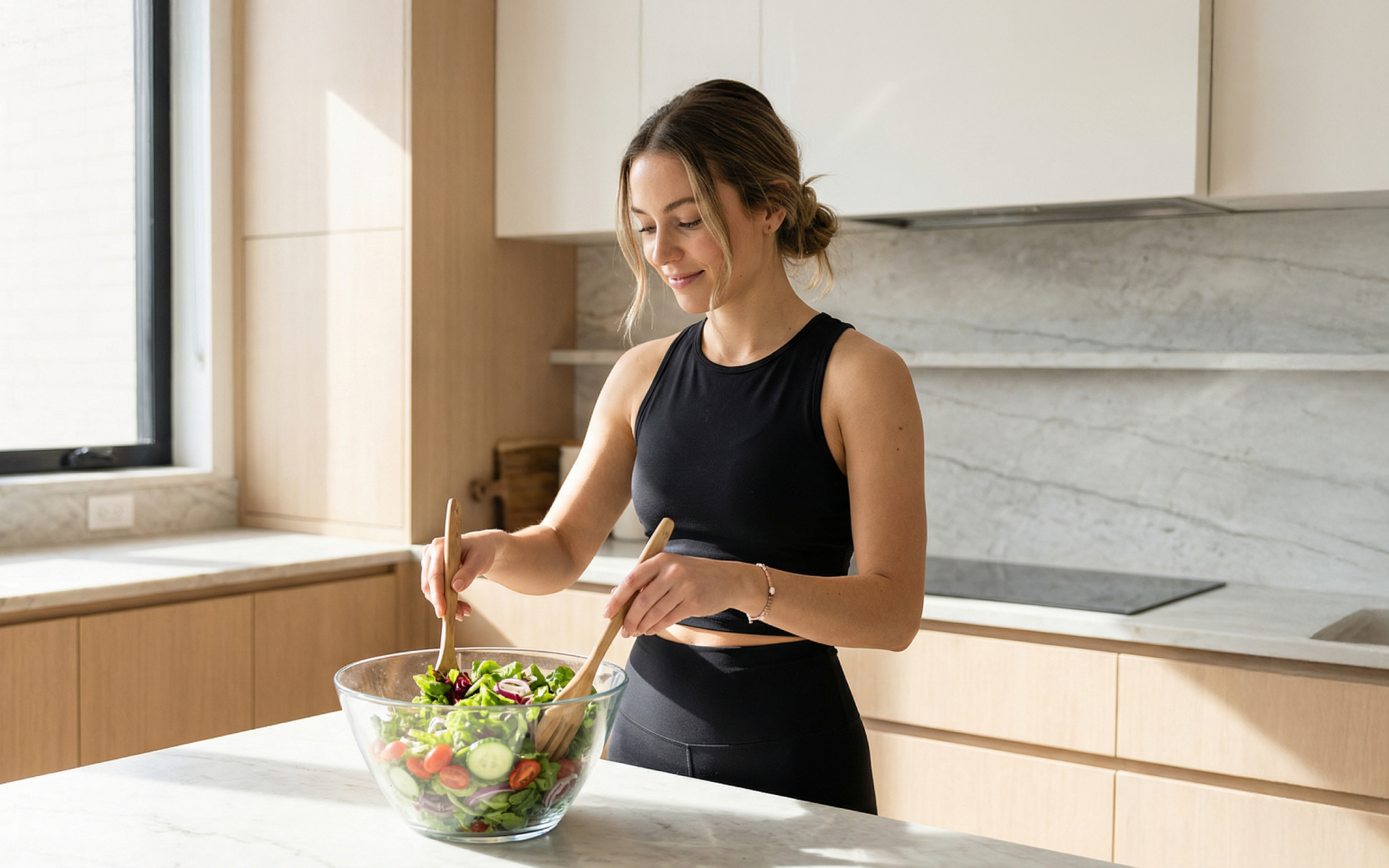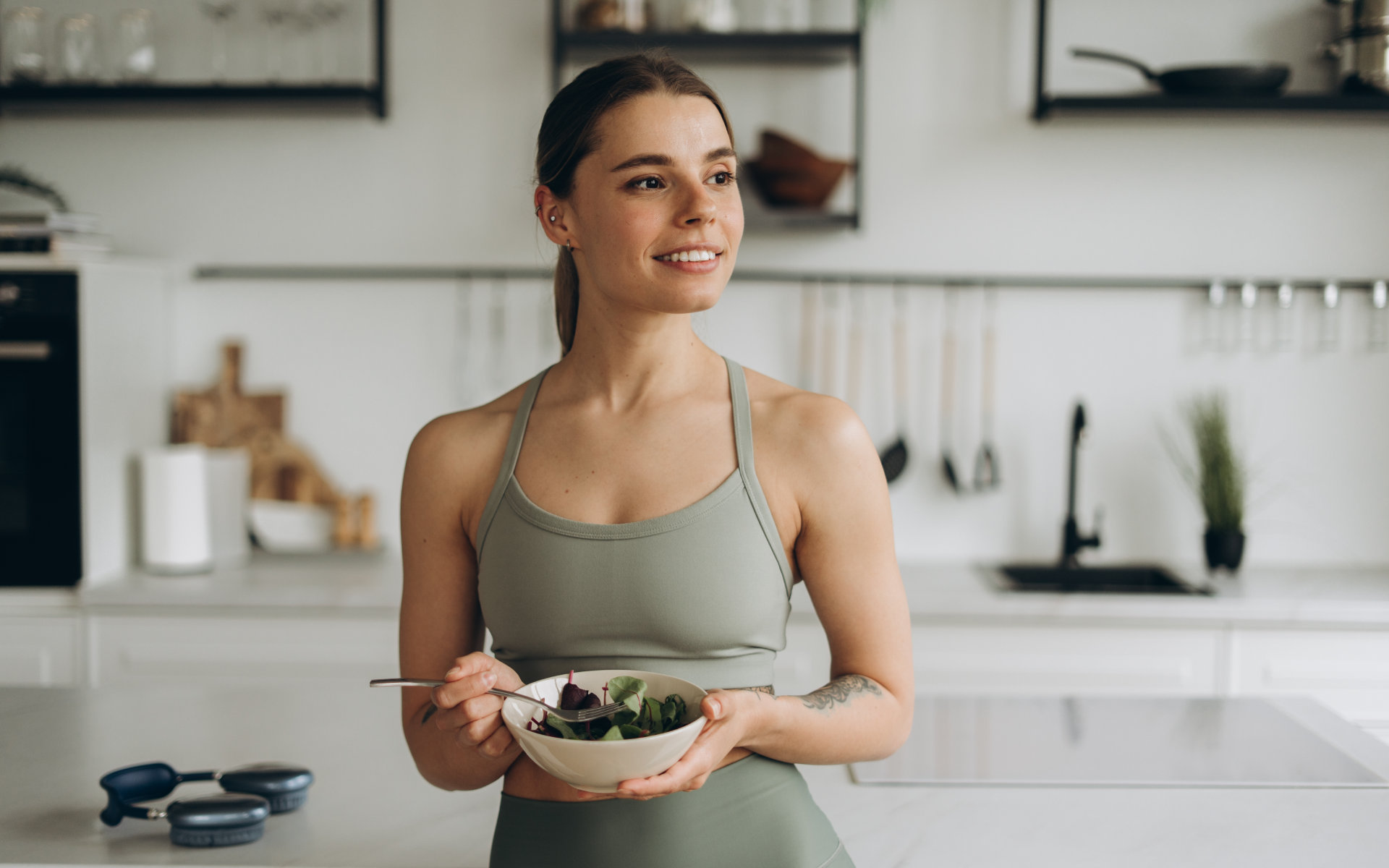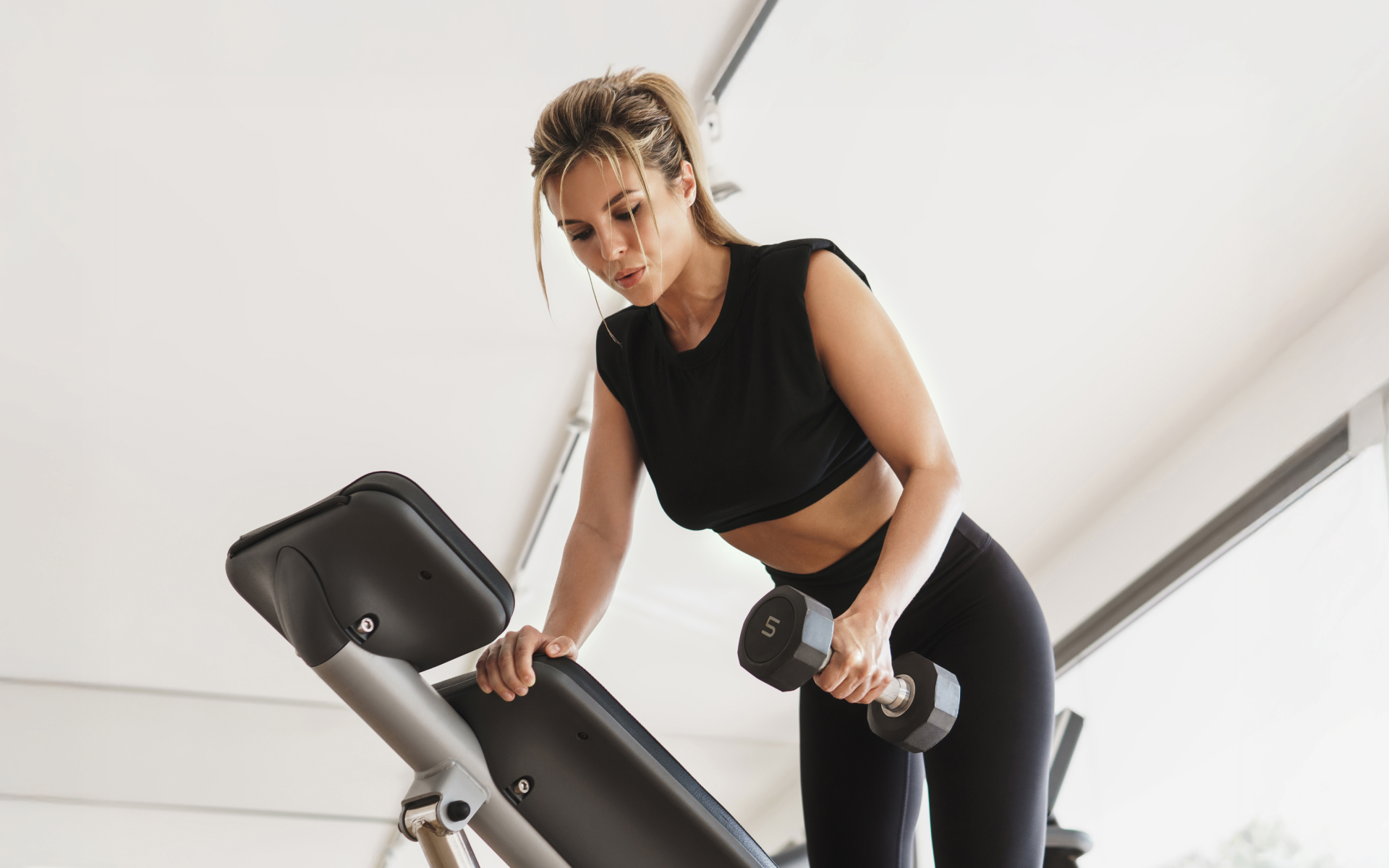What is nutrient-packed meal prep for weight loss and muscle gain?
Focusing your meals on high-quality nutrients could make a real difference when you want to lose fat while preserving or even building lean muscle.
This meal prep isn’t about extreme dieting, but about adopting simple, sustainable habits that fit into your life, training, and goals.
If you’re seeking clarity and real results, this article provides you with:
- Practical ideas
- Useful examples
- Tools to help every meal count.
You’ll find approaches and answers to questions like which is the best meal to lose fat and maintain or gain muscle, whether it’s possible to lose fat without losing muscle, and what role protein plays. We’re going to transform your habits, one step at a time.
Is It Possible To Lose Weight And Build Muscle At The Same Time?
Believe it or not, it’s possible to lose weight and gain muscle mass at the same time, but with some critical considerations.
Achieving this combination, often referred to as “body recomposition,” may be easier for some individuals and at certain life stages (1).
For example, starting to train, having a higher body fat percentage, or being inactive, the body tends to respond well to new stimuli, and muscle memory can help recover mass faster.
This process makes muscle recomposition easier even with a light caloric deficit, because the initial stimuli often promote faster adaptations in strength and muscle size. At the same time, the available fat reserves could support the energy needed to train with intensity (2) (3).
If you’re already training regularly and have a relatively low body fat percentage, it could be a bit more challenging, but not impossible with careful planning.
So, how do you do it?
Here are some key points:
Nutrition:
- Calorie deficit: You need to eat fewer calories than you burn, but not too much. A deficit of around 200–300 calories per day could be a good starting point.
- Protein: You need high-protein meals for muscle gain and fat loss and meal prep ideas high-protein.
Aim for approximately 2 grams of protein per kilogram of body weight per day (or more), evenly distributed across meals.
Options include lean chicken or turkey, fish, eggs, legumes, tofu, tempeh, Greek yogurt, and cottage cheese (4) (5).
Check these Protein-rich meal ideas.
- Carbohydrates: Don’t fear them, they’re your energy source.
Prioritize complex carbs like brown rice, quinoa, oats, and sweet potatoes (6).
- Healthy fats: Essential for hormones and nutrient absorption.
Include sources such as avocados, nuts, seeds, olive oil, and fatty fish (7).
BetterMe: Health Coaching app helps you achieve your body goals with ease and efficiency by helping to choose proper meal plans and effective workouts. Start using our app and you will see good results in a short time.
- Hydration: Drink enough water throughout the day to stay hydrated.
Hydration supports performance, recovery, and metabolism (8).
Strength training:
- To gain muscle, you must stimulate it. Strength training with weights or resistance is the most effective tool for building muscle.
- Ideally, 3–5 strength training sessions per week, with adequate rest between sessions to allow for muscle recovery (3).
Rest:
- Rest is as essential as training and nutrition.
- Aim for 7–8 hours of sleep per night to allow your body to recover and build muscle.
Read more: How Long Does It Take To Lose 15 Pounds? What Science & Experts Say
Can I Lose Weight But Keep My Muscle?
Yes, you could lose weight and maintain your muscle mass!
With the right strategy and a bit of discipline, it’s possible. We’ve discussed before the possibility of losing fat and gaining muscle simultaneously, and while this process may be a bit slower and require precision, maintaining your muscle mass while losing weight is an achievable goal in the short to medium term.
The body is an adaptable machine. With the right tools, it can work wonders.
What are those tools?
3 fundamental pillars we discussed earlier:
- Nutrition: Moderate calorie deficit (200–300 calories per day), prioritizing protein, complex carbohydrates, and healthy fats.
- Training: Strength training primarily, at least 3 times per week.
- Rest: 7–8 hours of sleep per night and stress management.
Remember that everyone is different, and what works for one person might not work for another. Ideally, you should consult with a health professional, such as a registered dietitian, to help you design a personalized plan that fits your needs and goals.
Is Meal Prep Good For Weight Loss And Muscle Gain?
High-protein meal prep for muscle gain can be a highly effective tool for achieving muscle growth.
When you have meals already cooked and ready, you reduce the chances of giving in to unhealthy temptations.
How many times have you come home tired after work or the gym and felt too lazy to cook? That’s when you might order fast food or grab whatever you can find in the fridge.
Having your meals pre-made gives you much greater control over what you eat.
Additionally, meal prep requires a lot of time, but in the long run, it saves you a significant amount of time.
Meal prepping could help you control portions and ingredients.
You can measure calories, ensure there are enough vegetables and proteins, complex carbohydrates, and healthy fats, and avoid excess unhealthy fats or added sugars. The key is planning balanced and nutritious meals.
Meal prepping requires planning and organization. Start small by preparing only a few meals per week, and as you feel more comfortable, you can increase the amount.
Some tips:
- Plan your weekly menu. Before you go to the supermarket, decide what you’ll eat each day. This planning could help you buy only what you need and avoid impulse purchases of unhealthy items.
- Choose recipes that are easy to prepare and store well. Don’t be afraid to experiment! Try different recipes and find the ones you like best. Diversity is key to avoiding boredom.
- Freeze individual portions. If you make a large batch of food, you can freeze individual portions to always have something quick and healthy on hand.
If you’re considering starting meal prep, we encourage you to give it a try.
Start gradually, experiment with different recipes, and find what works best for you.
What Is The Best Meal To Eat To Lose Weight And Gain Muscle?
There are dietary strategies that, when combined with exercise, will help you achieve those goals of losing weight and gaining muscle mass at the same time.
The first thing you need to be clear about is that the key lies in balance and consistency. It’s not about “forbidden” versus “allowed” foods.
Instead, we’ll focus on building good habits that you can maintain over time.
- As we mentioned before, protein is key, essential for building and repairing muscle tissue.
Where do you find protein? Lean meats (chicken, turkey, lean beef), fish (salmon, tuna, cod), eggs, legumes (beans, lentils, chickpeas), tofu, tempeh.
Try to include a good portion of protein in every meal.
- Next, don’t forget healthy fats. Your body needs fat to function correctly.
Healthy fats also give you energy and help you feel full.
Think avocado, extra-virgin olive oil, nuts (such as walnuts, almonds, and hazelnuts), seeds (like chia, flax, and pumpkin), and fatty fish like salmon.
- And of course, vegetables! These are your best friends.
Packed with vitamins, minerals, fiber, and antioxidants, they help you stay healthy, feel good, and lose weight.
Fiber keeps you full, which helps you eat less, and the vitamins and minerals give you the energy you need to train.
Which vegetables to eat? All of them! Broccoli, spinach, carrots, peppers, cucumber, zucchini, lettuce, the more colors, the better (9).
- Regarding carbohydrates. They are also a good energy source for your body, especially if you’re exercising to gain muscle mass.
However, it’s essential to select “healthy” carbohydrates, which are complex and digested slowly, releasing energy gradually.
Complex Carb Examples? Brown rice, quinoa, oats, sweet potato, and legumes.
Avoid refined carbohydrates, such as white bread, white pasta, sugary cereals, and highly processed products.
Keep reading because we’ll show you examples you can apply in your day-to-day life, plus recipes you can use for:
- Meal prep recipes for weight loss female or male.
- A meal plan for weight loss and muscle gain female or male.
Additionally, you can check out our recent post for more inspiration: The Ultimate meal plan for weight loss and muscle gain female.
What Is A Balanced Sample Of Meal Prep For Weight Loss And Muscle Gain?
Let’s get practical!
Achieving a balance between weight loss and muscle gain through meal prepping is absolutely possible.
To help you get started, here are some options to incorporate into a 7-day meal plan for muscle gain and fat loss, or to support a new lifestyle change using these ideas.
Healthy meal prep ideas for weight loss and muscle gain include:
Breakfast ideas:
- Overnight Oats: Rolled oats soaked in coconut milk or almond milk overnight, along with chia seeds, chopped nuts, and a hint of cinnamon.
- Scrambled Eggs with Veggies: 2-3 scrambled eggs with bell peppers, onion, mushrooms, and a small portion of avocado.
- Greek Yogurt with Granola and Seeds: 1 cup of plain, non-fat Greek yogurt with 1/4 cup homemade granola (low in sugar), 1 tablespoon chia or flax seeds, and some fresh fruit.
The BetterMe: Health Coaching app will provide you with a host of fat-frying fitness routines that’ll scare the extra pounds away and turn your body into a masterpiece! Get your life moving in the right direction with BetterMe!
Lunch ideas:
- Quinoa Bowl with Grilled Chicken: Cooked quinoa mixed with cubed grilled chicken, cucumber, tomato, bell pepper, and a light lemon-olive oil dressing.
- Tuna Wrap on Whole-Grain Bread: Tuna mixed with plain Greek yogurt, chopped celery, wrapped in a whole-grain wrap with lettuce and tomato.
- Lentil Stew with Vegetables: Lentils cooked with carrots, onions, celery, and a hint of brown rice.
Dinner ideas:
- Baked Salmon with a pinch of salt, pepper, and lemon juice, served with steamed asparagus and black beans.
- Grilled chicken breast with roasted sweet potato and steamed broccoli.
- Tofu stir-fry with soy sauce, broccoli, carrot, mushrooms, served over a bed of brown rice.
Snack ideas:
- A handful of Nuts and Seeds: Almonds, walnuts, pumpkin or sunflower seeds.
- Apple with Peanut Butter: One medium apple sliced with 1 tablespoon natural peanut butter.
- Carrot Sticks with Hummus: Fiber and a bit of protein.
These are just ideas. You can also visit our blog for more healthy meal-prep ideas and recipes to support weight loss. Adjust portions to fit your caloric and macronutrient needs. Listen to your body and consult a registered nutritionist for a personalized plan!
Read more: What Is A Lean 7-Day Meal Plan For Muscle Gain?
What To Eat For 1200 Calories For Weight Loss And Muscle Gain?
Before starting any restrictive eating plan, we recommend consulting with a registered dietitian or nutritionist. They could assess your individual needs, medical history, current activity level, and other essential factors to create a personalized plan and determine if a 1200-calorie meal plan is safe and effective for you.
That said, we could offer you some ideas for a one-day meal plan focused on a 1200-calorie meal plan to maximize fat loss and support muscle growth.
The main challenge is that on a 1200-calorie meal plan, every bite counts.
You need to ensure that each meal provides the nutrients required to maintain and build muscle, while also promoting fat loss. This precaution means avoiding processed foods, added sugars, and unhealthy fats, and focusing on whole, nutritious foods.
Example of a 1200-calorie meal plan for weight loss and muscle gain:
- Breakfast (250–300 calories):
Example: 2-egg-white omelette with spinach and mushrooms, and a small portion of oats with berries.
- Lunch (350–400 calories):
Example: Grilled chicken breast with a large mixed-vegetable salad and one tablespoon of olive oil.
- Dinner (350–400 calories):
Example: Baked white fish with steamed broccoli and a small portion of roasted sweet potato.
- Snacks (100–150 calories each):
- A small apple
- A handful of almonds
- Unsweetened Greek yogurt with a teaspoon of chia seeds
Fat loss is general across the body, and there isn’t a one-size-fits-all rule. In many cases, you might notice changes first in the areas where you tend to store fat based on your genetics and hormones (for example, the abdomen, face, hips, or arms). The key is to maintain a sustained caloric deficit and combine strength training with regular physical activity, focusing on whole, nutritious foods. It’s common to see muscle gain before fat loss, especially if you’re just starting or returning after a break. Muscle is more metabolically active than fat, so muscle growth can initially mask fat loss. However, over time, it speeds up resting energy expenditure and facilitates fat loss. A practical and efficient rep range is 6–12 reps per set with a weight that brings you close to fatigue. This range supports hypertrophy and, in the context of a moderate deficit and adequate protein, helps you lose fat without losing muscle. The key is progression: gradually increase load or volume and prioritize recovery. Yes, it’s possible to lose weight with strength training alone, because lifting increases muscle mass and raises metabolism. However, combining resistance training with some cardio tends to accelerate calorie burn and improve cardiovascular health, making it easier to achieve a sustainable deficit.Frequently Asked Questions
Which body part loses fat first?
Why am I gaining muscle before losing fat?
How many reps should I do to build muscle and lose fat?
Can you lose weight just by lifting weights without cardio?
The Bottom Line
In the pursuit of a healthier, more defined physique, the overload of information can feel overwhelming. However, the essence of body recomposition (losing fat while preserving or even building muscle) ultimately comes down to a comprehensive and sustainable strategy.
The foundation of this transformation rests on the 3 fundamental pillars: strategic nutrition, consistent strength training, and adequate rest.
It’s essential to remember that, like everything, the success of this process largely depends on individual circumstances. What works for one person may not be as effective for another. Therefore, consulting with a healthcare professional, such as a dietitian or nutritionist, becomes essential. An expert could help personalize your plan, tailoring it to your specific needs, lifestyle, and goals.
Ultimately, physical transformation is a journey that requires consistency, patience, and a holistic approach. By understanding and applying these key principles, you’ll be on the right track to achieving your goals in a healthy and sustainable manner.
DISCLAIMER:
This article is intended for general informational purposes only and does not serve to address individual circumstances. It is not a substitute for professional advice or help and should not be relied on for making any kind of decision-making. Any action taken as a direct or indirect result of the information in this article is entirely at your own risk and is your sole responsibility.
BetterMe, its content staff, and its medical advisors accept no responsibility for inaccuracies, errors, misstatements, inconsistencies, or omissions and specifically disclaim any liability, loss or risk, personal, professional or otherwise, which may be incurred as a consequence, directly or indirectly, of the use and/or application of any content.
You should always seek the advice of your physician or other qualified health provider with any questions you may have regarding a medical condition or your specific situation. Never disregard professional medical advice or delay seeking it because of BetterMe content. If you suspect or think you may have a medical emergency, call your doctor.
SOURCES:
- Editorial: New insights and advances in body recomposition (2024, pmc.ncbi.nlm.nih.gov)
- Body Recomposition: Can Trained Individuals Build Muscle and Lose Fat at the Same Time? (2020, journals.lww.com)
- Adaptations to Endurance and Strength Training (2018, pmc.ncbi.nlm.nih.gov)
- A high-protein diet (3.4 g/kg/d) combined with a heavy resistance training program improves body composition in healthy trained men and women – a follow-up investigation (2015, biomedcentral.com)
- Timing and distribution of protein ingestion during prolonged recovery from resistance exercise alters myofibrillar protein synthesis (2013, physoc.onlinelibrary)
- The Effects of Carbohydrate Intake on Body Composition and Muscular Strength in Trained Men Undergoing a Progressive Resistance Training (2023, pmc.ncbi.nlm.nih.gov)
- Quality of Dietary Fat Intake and Body Weight and Obesity in a Mediterranean Population: Secondary Analyses within the PREDIMED Trial (2018, pubmed.ncbi.nlm.nih.gov)
- Hydration and Body Composition in Sports Practice: An Editorial (2023, pmc.ncbi.nlm.nih.gov)
- Fruits, vegetables, and health: A comprehensive narrative, umbrella review of the science and recommendations for enhanced public policy to improve intake (2020, pubmed.ncbi.nlm.nih.gov)

